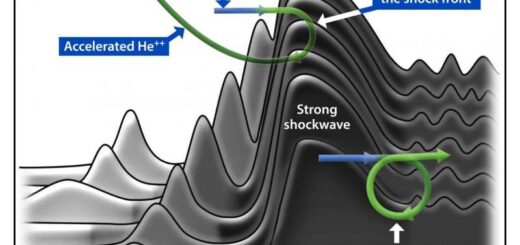Species In The Universe Go Extinct Soon After Attaining High Levels Of Technology – Astrophysicist Suggests
Earth is not unique. There are billions of other planets circling billions of other stars in the Universe. Considering the vastness of space, it’s logical to think that there simple must be some intelligent life out there.
So, where are those advanced extraterrestrial species and why haven’t we detected them yet?
An astrophysicist suggests that species, like our own go extinct soon after attaining high levels of technology.

Daniel Whitmire, a retired astrophysicist who teaches mathematics at the University of Arkansas, once thought the cosmic silence indicated we as a species lagged far behind. He is now of different opinion.
“I taught astronomy for 37 years,” said Whitmire. “I used to tell my students that by statistics, we have to be the dumbest guys in the galaxy. After all we have only been technological for about 100 years while other civilizations could be more technologically advanced than us by millions or billions of years.”
Today, Whitmire thinks we, humans are a typical species in the Universe. So, why did he change his mind and what is his assumption based on?
By applying a statistical concept called the principle of mediocrity — the idea that in the absence of any evidence to the contrary we should consider ourselves typical, rather than atypical, Whitmire concluded that our species may not be as primitive as he previously thought, but rather average.
The argument is based on two observations: We are the first technological species to evolve on Earth, and we are early in our technological development. (He defines “technological” as a biological species that has developed electronic devices and can significantly alter the planet.)
The first observation seems obvious, but as Whitmire notes in his paper, researchers believe the Earth should be habitable for animal life at least a billion years into the future. Based on how long it took proto-primates to evolve into a technological species, that leaves enough time for it to happen again up to 23 times.
On that time scale, there could have been others before us, but there’s nothing in the geologic record to indicate we weren’t the first. “We’d leave a heck of a fingerprint if we disappeared overnight,” Whitmire noted.
By Whitmire’s definition we became “technological” after the industrial revolution and the invention of radio, or roughly 100 years ago. According to the principle of mediocrity, a bell curve of the ages of all extant technological civilizations in the universe would put us in the middle 95 percent.
In other words, technological civilizations that last millions of years, or longer, would be highly atypical. Since we are first, other typical technological civilizations should also be first. The principle of mediocrity allows no second acts. The implication is that once species become technological, they flame out and take the biosphere with them.
“If we’re not typical then my initial observation would be correct,” he said. “We would be the dumbest guys in the galaxy by the numbers.”
Whitmire’s theory is very interesting, but there are also other prominent scientists who have debated how to classify extraterrestrial civilizations.
In a seminal paper published in 1964 in the Journal of Soviet Astronomy, Russian astrophysicist Nicolai Kardashev theorized that advanced civilizations must be grouped according to three types: Type I, II, and III, which have mastered planetary, stellar and galactic forms of energy, respectively.
He calculated that the energy consumption of these three types of civilization would be separated by a factor of many billions.
“Although it is impossible to predict the precise features of such advanced civilizations, their broad outlines can be analyzed using the laws of physics. No matter how many millions of years separate us from them, they still must obey the iron laws of physics, which are now advanced enough to explain everything from sub-atomic particles to the large-scale structure of the universe, through a staggering 43 orders of magnitude, “Dr. Michio Kaku said.
Since we have never been in contact with an advanced extraterrestrial race, it’s really impossible to predict the precise features of such advanced civilizations.



 Creators of mankind
Creators of mankind Description of “Tall white aliens”
Description of “Tall white aliens” Where they came from?
Where they came from? About hostile civilizations
About hostile civilizations The war for the Earth
The war for the Earth “Tall white aliens” about eternal life
“Tall white aliens” about eternal life Video: “Nordic aliens”
Video: “Nordic aliens” Aliens
Aliens Alien encounters
Alien encounters The aliens base
The aliens base UFO
UFO Technology UFO
Technology UFO Underground civilization
Underground civilization Ancient alien artifacts
Ancient alien artifacts Military and UFO
Military and UFO Mysteries and hypotheses
Mysteries and hypotheses Scientific facts
Scientific facts


















